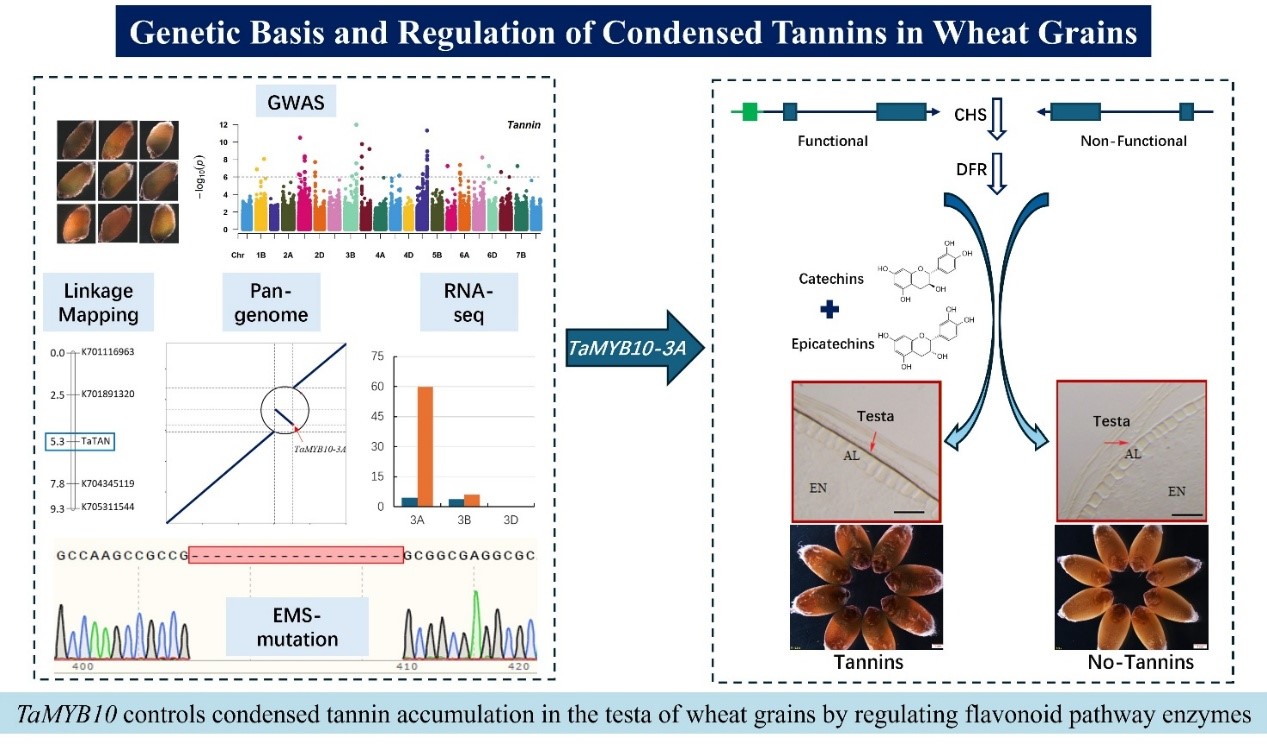Genetic architecture of condensed tannins accumulated in wheat grains unveiled
Published 26 October, 2025
Wheat grains contain not only starches and proteins but also various important bioactive substances such as vitamins, carotenoids, and phenolic compounds that potentially benefit human disease prevention and physique improvement. Chief among them are condensed tannins, a class of phenolic compounds with biological and biochemical functions widely present in plants and foods. However, no major locus or gene has been identified that determines condensed tannins presence/absence in wheat grains, preventing breeders from optimizing condensed tannins content to balance nutrition and end-use quality.
In a new study published in The Crop Journal, researchers from Shandong Agricultural University in China discovered that TaMYB10-3A acts as a molecular switch for condensed tannins presence/absence in wheat grains. The team identified molecular markers, providing valuable genes for the precise modulation of condensed tannins content in wheat grains.
“Our analysis revealed condensed tannins deposited specifically in the test a layer around the embryo of red-grained wheat as catechin- and epicatechin-formed polymers,” shares lead author Yunlong Pang. “Genome-wide association study identified 22 genetic loci affecting condensed tannins content, one of which, TaTAN, a single dominant gene controlling condensed tannins presence, was mapped to chromosome 3A in a segregation population.”
Further pan-genome analysis, transcriptome profiling and ethyl methane sulfonate induced mutants together demonstrated that TaMYB10-3A, a R2R3-MYB transcription factor, was the causal gene.
“TaMYB10-3A directly trans-activates the expression of core flavonoid genes such as chalcone synthase and dihydroflavonol 4-reductase to initiate condensed tannins biosynthesis,” explains Pang. “We identified three loss-of-function alleles in TaMYB10-3A caused by large fragment inversion-deletion and insertion which abolished both condensed tannins deposition and red pigmentation, demonstrating the pleiotropic effect of TaMYB10-3A on condensed tannins presence and grain color”.
The team's findings provide a comprehensive understanding of condensed tannins presence in wheat grains and lay a foundation for manipulating condensed tannins metabolites to improve wheat grain end-use quality and nutrition values.

Media Contact:
Name: Guangming Yang
Email address: yangguangming@caas.cn
State of Origin: China
Tel: 13683670916
Article details:
Title: Genetic architecture of condensed tannins accumulated in wheat grains